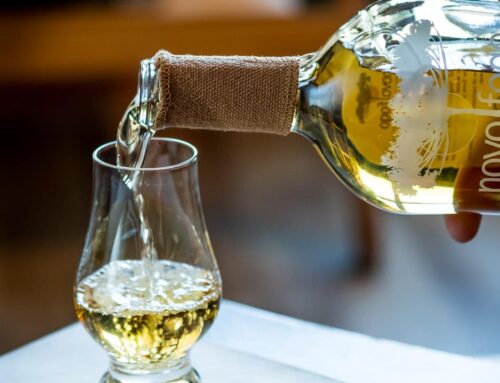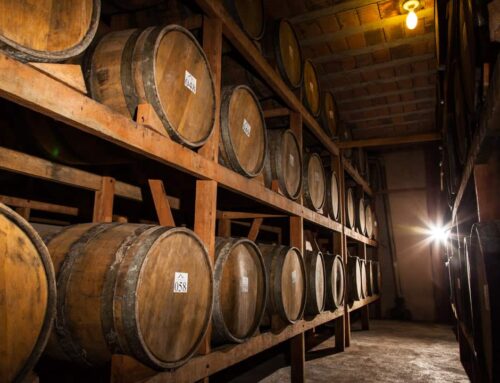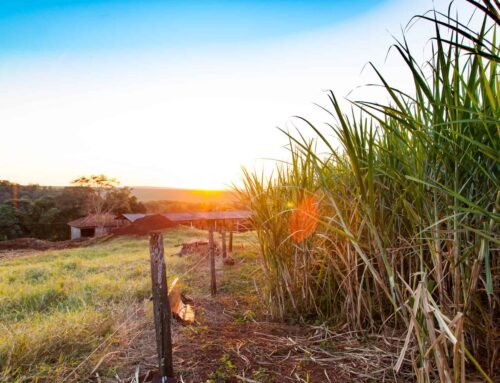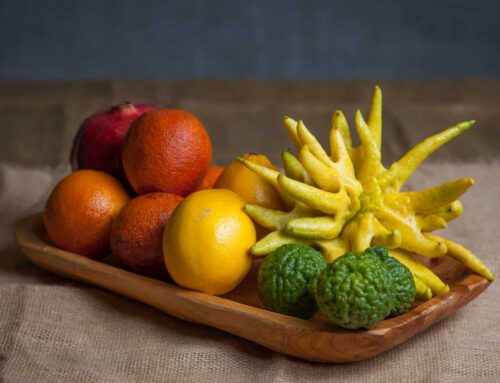Although it may look like it was drawn from a Dr. Seuss story, the unusually-shaped tree at the center of our logo is actually an important symbol in southern Brazil. It is called an araucaria (ah-row-CAH-ree-ah), a.k.a. the pinheiro-do-Paraná, the Paraná pine. So how did it end up on bottles of Novo Fogo cachaça?
Until the 20th century, massive forests of towering araucaria trees blanketed the mountainous and plateaued regions of southern Brazil. In the 1950s and 1960s, however, araucaria lumber became the country’s number one export, as its wood is soft and easy to process. Consequently, only about three percent of the tree’s original population survives today, and the tree is listed as critically endangered on the IUCN Red List.
Araucaria trees only grow at altitudes above about 500 meters, and they are plentiful in and around Paraná’s capital city of Curitiba, which sits on a plateau. As you drive from Curitiba toward the Novo Fogo distillery, over the mountains and down to the sea, araucarias become less plentiful and only a scant few grow in the coastal jungles.
<iframe width="560" height="315" src="https://www.youtube.com/embed/YU1aKFFv0To?rel=0" frameborder="0" allowfullscreen></iframe>
Araucaria trees begin their lives looking like most pine saplings, but as they grow older their branches spread and cluster at the top in a wide, flat canopy above a soaring, skinny trunk. They bear massive pine cones the size of soccer balls, which are filled with hundreds of delicious, thumb-sized pine nuts called pinhão (peen-yowng). After the pinhão are collected from the fallen pine cones, they are roasted to soften the nuts covered by an outer husk, peeled, and enjoyed as a delicacy. The nuts themselves are soft, creamy, and savory, with a flavor like a cross between roasted pine nuts and chestnuts.
In addition to human efforts to replant araucarias, there is another party responsible for spreading the trees, and they are frequent visitors at our distillery. The gralha-azul (grahl-ya ah-soo), or azure jay, is a Brazilian relative to crows and ravens. Its strong beak and cunning wit allow the gralha-azul to pry open the pinhão, which the bird later poops out in the forest, and voila! — a new araucaria is born.
Roasted pinhão are a delicacy in southern Brazil.
That’s a big pine nut!
A gralha-azul visited us on a rainy day at the distillery.
Today the araucaria is a protected species and it has become a symbol for conservation. In Brazil, it’s also a broadly recognized icon for the state of Paraná — the state flag even features an araucaria branch joined by a branch of erva-mate, another iconic plant from Paraná state.
For Novo Fogo, an artisanal cachaça producer committed to tradition and sustainability, the araucaria proved to be the perfect symbol. The tree is part of an ecosystem, but it’s also firmly embedded in the culture of southern Brazil. With its tasty pinhão that seemingly fall from the sky, the araucaria gives sustenance while symbolizing the need to seek balance and coexistence with nature, and that’s a symbol we can drink to.
Although listed as critically-threatened, araucaria are making a comeback in Paraná state.
The flag of Paraná state features an araucaria branch on the right and an erva-mate branch on the left.






